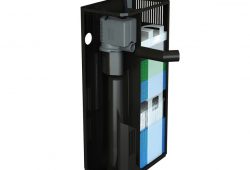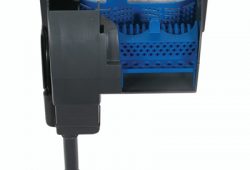Lighting For Aquarium
In this article I’ll tell you about Lighting For Aquarium. If you are putting in an aquarium in your home or office, there are a number of things you wish to consider. 1st, what sort of ecosystem do you want to form: freshwater, saltwater, a reef atmosphere, a river surroundings? The size of your tank, and also the equipment you may want to outfit your tank, all depend on what you want to stock the tank with. (If you are a beginner, a smaller tank is generally additional suitable.) However no matter what your eventual aquarium surroundings can seem like, you may need to light-weight it.

Since your aquarium will possibly be indoors, you wish lighting to be ready to view your fish and plants; overhead or ambient lighting that’s already present in the space where you’ll be keeping your aquarium is never sufficient. However, most vital, your flora and abundant marine life (like coral and anemones) require lightweight for photosynthesis. Lighting conjointly influences fish behavior and affects the overall well-being of your aquarium environment.
Aquarium lights are generally mounted to a hood or cover that matches over your tank. Obviously, you want to have a hood that’s suitable for the size of your tank, and you should discuss your choices with your dealer when you first purchase your tank. Most aquarium lighting is fluorescent (traditional output or compact) or high-intensity metal halide, and you will want to determine what you’ll want before purchasing a tank and hood, to confirm that they will accommodate the design of lighting, and size and configuration of sunshine bulb, that you’ll require.
As a general formula, you’ll need a pair of watts of lighting for each gallon of water in your tank; a sixty-gallon tank would then need a hundred and twenty watts of lighting power. But, if you have dense flora with higher requirements, then you’ll need a minimum of double that — figure on five watts per gallon — and reef tanks would like even more.
Remember that lighting is a complicated subject, and therefore the watts-per-gallon guideline is only the start of the discussion; several other variables will come into play, especially as lighting systems become more advanced. The output from a sixty-watt metal halide bulb will differ significantly from the output from a sixty-watt floodlight, for instance. Other variables you may want to think about embody lumens per watt, PAR (photosynthetic active radiation), PUR (photosynthetic useable radiation), and even the area the bulbs will occupy in the hood; do some analysis on the Internet and discuss the problem with your dealer or with an experienced hobbyist.
You want your lights to bring out the colourful coloration of fish, coral, plants, and alternative life forms you may have in your aquarium. Light will have a range of visual quality with respect to how colors are rendered to our eyes, and this is measured by the CRI (color rendering index) of a explicit type of light bulb. The CRI of a bulb is based on a scale of one to a hundred, with a hundred indicating how a lit object can seem in natural daylight conditions. Full-spectrum bulbs — bulbs that emit all the wavelengths of visible light — approximate natural light most closely, and thus have high CRI values. But, you may wish to boost certain colours by using color-enhancing bulbs, which emit light from the “warmer” finish of the color spectrum and accent reds and yellows. Several enthusiasts mix full-spectrum bulbs with color-enhancing bulbs.
Another commonly used measurement is a bulb’s color temperature, measured by its Kelvin rating (K-rating); the K-rating describes the temperature (in degrees Kelvin) and corresponding range of colors of a light-weight source. The progression of colours from the lower end of the Kelvin scale begins with reds and oranges, to yellows, greens, blues, and indigos, on to violet at the upper end. Oddly, the colors highlighted by bulbs with lower K-ratings (reds and yellows) are thought-about “warmer,” whereas the blues and violets highlighted by bulbs with higher K-ratings are thought of “cooler.”
Daylight at midday features a K-rating of 5,five hundred degrees Kelvin and contains a blend of all the colours within the spectrum; so, a five,five hundred Kelvin bulb may be a full-spectrum bulb. Bulbs with a lower K-rating offer off reddish lightweight, and bulbs with higher K-ratings emit bluish light. Freshwater aquariums generally do better with full-spectrum bulbs, perhaps complemented by some warmer color-enhancing bulbs. Saltwater aquariums, particularly reef aquariums, sometimes require higher K-ratings, at least 10,000 degrees Kelvin. Corals and invertebrates have naturally tailored to bluer light-weight and will thrive during a cool-light environment.
As for the functional purpose of aquarium lighting, your lighting will be the primary, and often the only, supply of light for your plants, corals, and other photosynthetic organisms. To confirm that this life-sustaining process proceeds smoothly, you ought to mainly be involved with the intensity of your bulbs; total wattage is the first live of light intensity. Freshwater planted aquariums need a pair of-five watts per gallon, however saltwater reef aquariums can need additional, as much as eight watts per gallon.
Many reef aquariums are lit with bulbs manufacturing “actinic” light; these bulbs are high intensity and can promote photosynthesis in your coral and your reef plant life. But, as a result of actinic bulbs manufacture light that is strongly blue, they have to be balanced with hotter lightweight, or with full-spectrum bulbs. A “fifty/50 lamp” combines full-spectrum light-weight (typically 6,000 degrees Kelvin) with actinic light-weight in an exceedingly single bulb, and would therefore be a solution if you only have a single fixture in your hood.
Once you’ve got set on your lighting, be certain to put in the lights on a timer. Most aquatic environments do best with 10-twelve hours of sunshine every day, approximating natural conditions; fish need “down time” the same as humans! If you’re susceptible to forgetting to flip your aquarium lights on and off every day, a timer can do the job for you.



